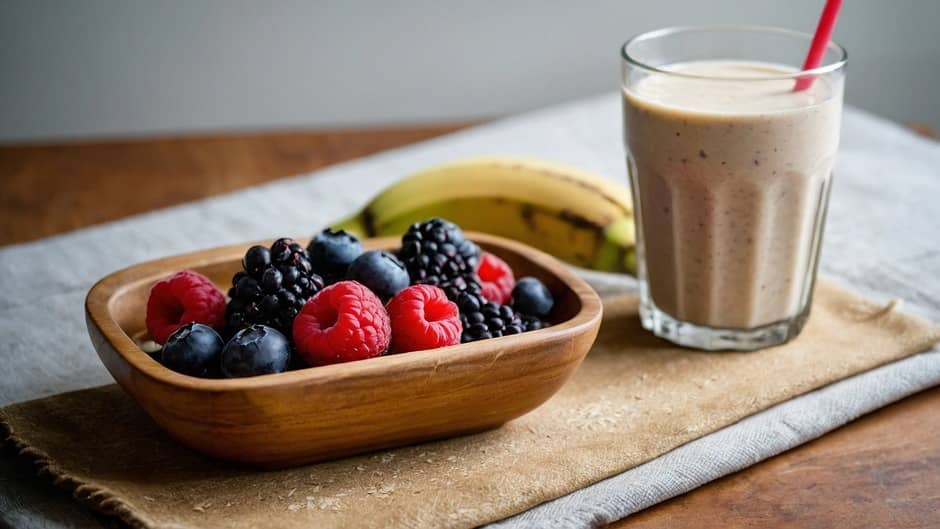What Causes Knee Pain After Working Out?
You just got done working out, and your knee hurts.
What’s going on? Knee pain with physical activity is a prevalent issue with a variety of causes.
It is frequently the outcome of misuse or poor technique.
Now, how do you treat joint pain?
Your knees can be protesting if you tried new workouts or worked out harder than usual. It could also be the result of bad technique.
For instance, performing lunges or squats and having your knees buckle inward might put strain on your surrounding muscles and joints.
Weakness or imbalance in the muscles could be another factor.
Pain may result if the muscles in your thighs or the area surrounding your knees are not strong enough to support the weight you place on them.
It occasionally also depends on the kind of activity you perform.
Running and jumping are examples of high-impact exercises that can be difficult on the knees, particularly if your body isn’t acclimated to them or if you don’t have the proper gear, such as supportive shoes.
How to Get Rid of Joint Pain After Exercise?
Now, how do you handle those nagging joint problems after a workout?
Give your body time to heal first.
It’s important to rest. Some easy DIY cures can also help you feel better. Ice packs can help numb the discomfort and reduce inflammation in the affected area.
Apply the ice for 15 to 20 minutes at a time, making sure to wrap it in a cloth.
When taken as prescribed, over-the-counter analgesics like ibuprofen can also be helpful. Gentle exercise and stretching might also be beneficial.
Occasionally, mild motions might assist maintain the flexibility and lessen stiffness in your joints.
To assist reduce some of the strain on your knees, stretch your hamstrings and quadriceps.
Additionally, remember to stay hydrated! Water consumption can improve the healing process and lubricate your joints.
Also Read – What Causes Knee Joint Pain And Swelling? – Why Does My Knee Hurt When I Play Football? (2024)
How to Prevent Knee Swelling After Exercise?
You need to look after your body both before and after training if you want to avoid knee swelling.
It is necessary to fully warm up.
To get your muscles and joints ready for exercise, undertake dynamic stretching and gentle aerobics.
Static stretching can assist your muscles relax and lessen the chance of edema after an activity session.
It’s a good idea to be mindful of the kind and level of exercise you perform. Workout intensity can be gradually increased to assist your body adjust and avoid overuse issues. Additionally, the appropriate footwear might have a significant impact.
Some of the impact on the knees can be lessened with the use of supportive and cushioned shoes.
In order to relax your knees while staying active, mix high-impact activity with low-impact activities like swimming or cycling. Additionally, if you observe swelling, you can help reduce it by elevating your leg and using ice, as previously indicated.
One Knee Hurts After Exercise
You need to look after your body both before and after training if you want to avoid knee swelling. It is necessary to fully warm up.
To get your muscles and joints ready for exercise, undertake dynamic stretching and gentle aerobics.
Static stretching can assist your muscles relax and lessen the chance of edema after an activity session. It’s a good idea to be mindful of the kind and level of exercise you perform.
Workout intensity can be gradually increased to assist your body adjust and avoid overuse issues.
Additionally, the appropriate footwear might have a significant impact. Some of the impact on the knees can be lessened with the use of supportive and cushioned shoes.
In order to relax your knees while staying active, mix high-impact activity with low-impact activities like swimming or cycling. Additionally, if you observe swelling, you can help reduce it by elevating your leg and using ice, as previously indicated.

The Importance of Good Form During Exercise
You could believe that the only things that matter when exercising are your lifting weights or running times.
But let me tell you, it’s crucial to concentrate on proper form.
Assume that you are constructing a home. The whole structure is at risk if the foundation is done incorrectly.
Similarly, building a solid base is essential to proper form when exercising. This helps to ensure that you are working the proper muscles and lowers the danger of damage.
When you have good posture, you are using the appropriate muscles for each exercise and your body is stretched appropriately.
For instance, it’s crucial to keep your knees parallel to your feet during a squat and to avoid allowing them to buckle inward.
Protect your knees and strengthen your thighs and muscles in this way.
You may be unable to exercise due to long-term ailments, sprains, and strains caused by poor posture. Thus, instead of just pushing yourself to run faster or lift bigger weights, constantly pay attention to how you execute each exercise.
The secret is to perform the workouts safely and correctly to improve your performance.
Also Read – Can You Forget Traumatic Events? – 5 Painfully Clear Truths We All Tend to Forget Too Soon (2024)
Breathing In-Between Exercises
Although it may seem apparent, we frequently forget to breathe when exercising.
The way you breathe throughout an activity can have a significant impact on its effectiveness.
Proper breathing helps supply more oxygen to your muscles during intensive exercise or weightlifting, which can enhance your endurance and performance.
Here’s a quick tip: try to release your breath when the exercise reaches its hardest point. For instance, release your breath when you stand up during a push-up.
This supports your motions and preserves the stability of your core.
However, breathing during the easiest stage of the exercise—such as lowering yourself to perform a push-up—allows your muscles to slightly recoup and prime themselves for the subsequent push-up.
By keeping your body oxygenated and operating at peak efficiency, this breathing method helps you avoid weariness and finish your workout more quickly.
The Importance of a Good Warm-Up for Muscle and Joint Health
Although it may seem apparent, we frequently forget to breathe when exercising.
The way you breathe throughout an activity can have a significant impact on its effectiveness.
Proper breathing helps supply more oxygen to your muscles during intensive exercise or weightlifting, which can enhance your endurance and performance.
Here’s a quick tip: try to release your breath when the exercise reaches its hardest point. For instance, release your breath when you stand up during a push-up.
This supports your motions and preserves the stability of your core.
However, breathing during the easiest stage of the exercise—such as lowering yourself to perform a push-up—allows your muscles to slightly recoup and prime themselves for the subsequent push-up.
By keeping your body oxygenated and operating at peak efficiency, this breathing method helps you avoid weariness and finish your workout more quickly.
Read us on Medium.




